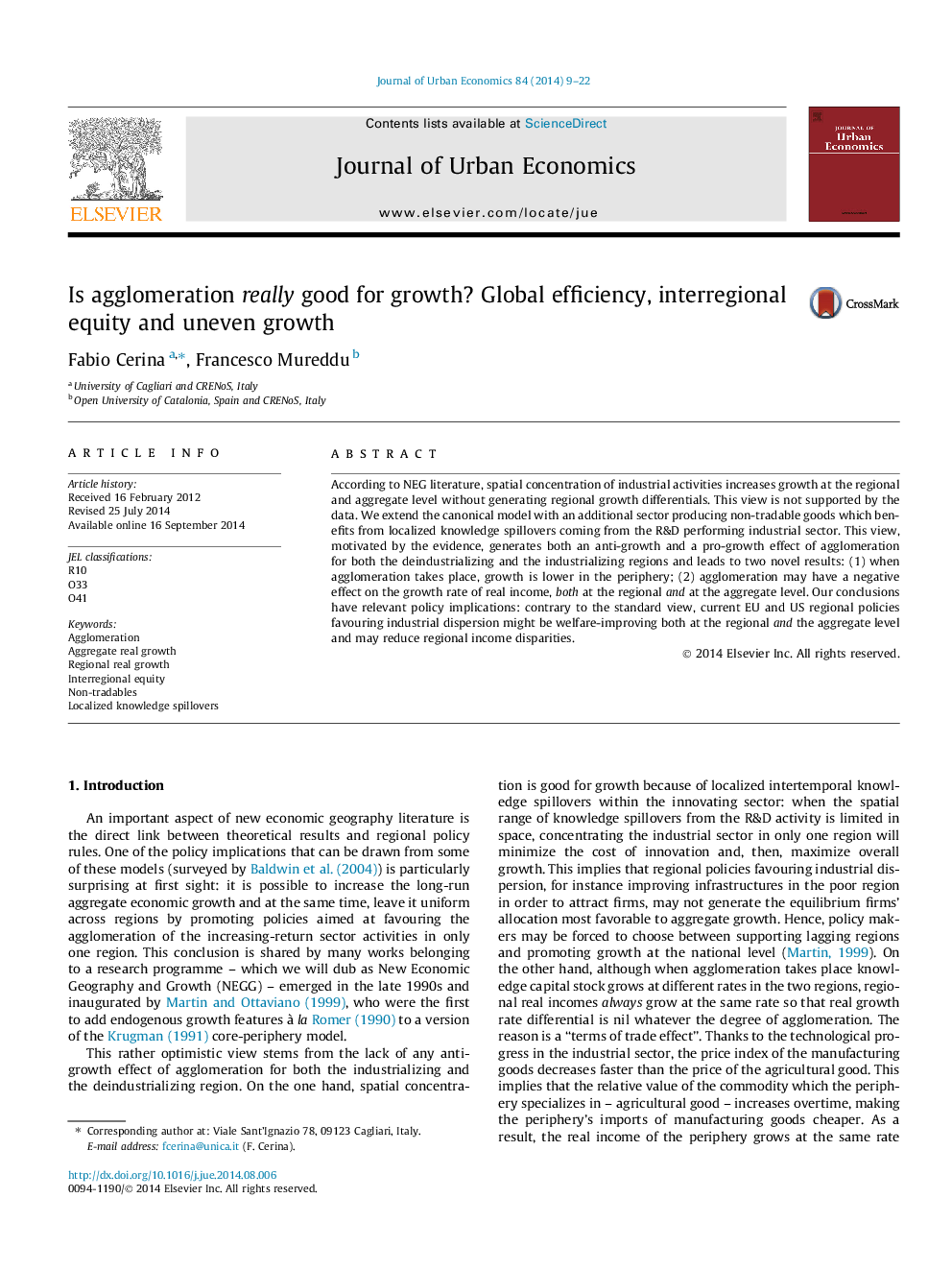| Article ID | Journal | Published Year | Pages | File Type |
|---|---|---|---|---|
| 10479697 | Journal of Urban Economics | 2014 | 14 Pages |
Abstract
According to NEG literature, spatial concentration of industrial activities increases growth at the regional and aggregate level without generating regional growth differentials. This view is not supported by the data. We extend the canonical model with an additional sector producing non-tradable goods which benefits from localized knowledge spillovers coming from the R&D performing industrial sector. This view, motivated by the evidence, generates both an anti-growth and a pro-growth effect of agglomeration for both the deindustrializing and the industrializing regions and leads to two novel results: (1) when agglomeration takes place, growth is lower in the periphery; (2) agglomeration may have a negative effect on the growth rate of real income, both at the regional and at the aggregate level. Our conclusions have relevant policy implications: contrary to the standard view, current EU and US regional policies favouring industrial dispersion might be welfare-improving both at the regional and the aggregate level and may reduce regional income disparities.
Keywords
Related Topics
Social Sciences and Humanities
Economics, Econometrics and Finance
Economics and Econometrics
Authors
Fabio Cerina, Francesco Mureddu,
